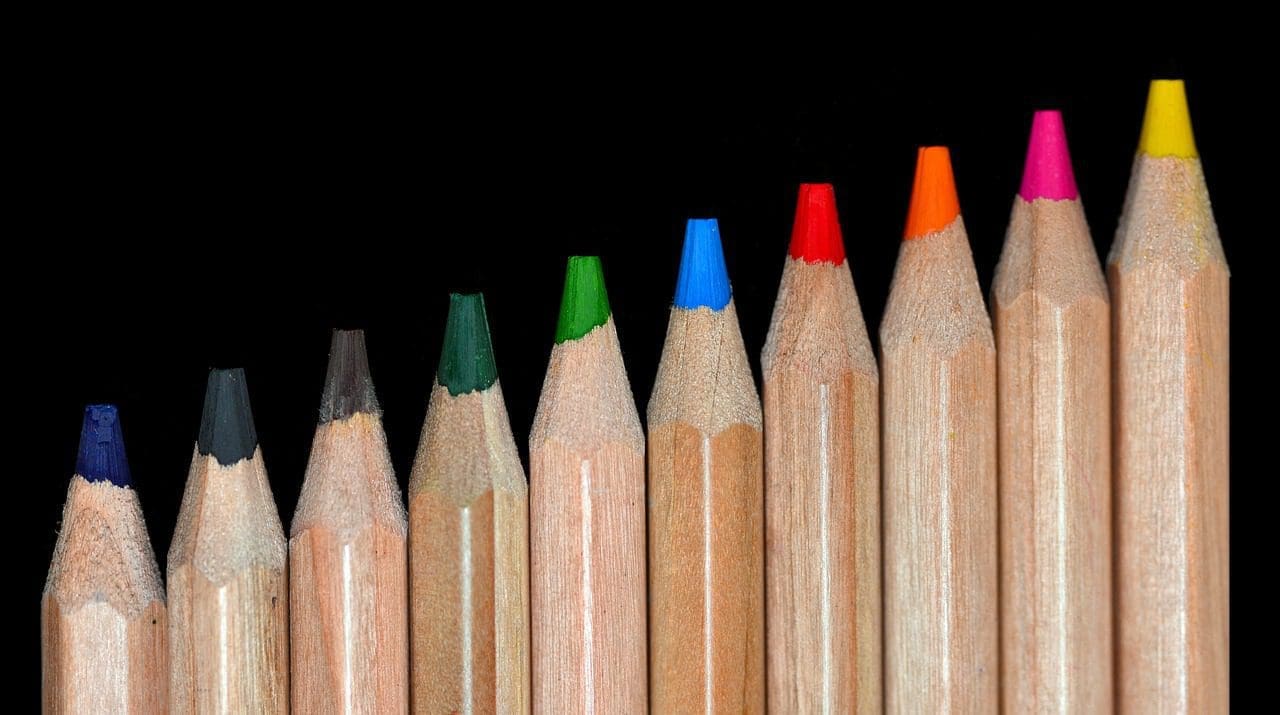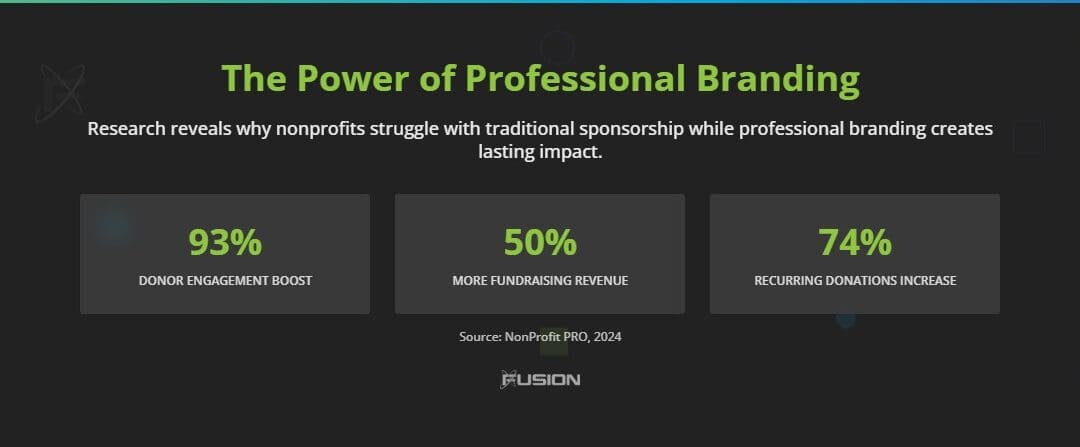If you’re starting a new business, it’s crucial to think about your logo colors. Sure, you could just pick any color, but the right one can make all the difference. In addition, colors evoke different emotions and feelings in people- some are happy and vibrant, others are serious or professional- so what will your company’s message be?
How can colors evoke different emotions and feelings in people?
Colors evoke different emotions and feelings in people. Some colors are happy and vibrant; others are serious or professional. It’s essential to choose a color compatible with your brand message to reflect the correct feeling you want to portray to potential customers.
When starting a new business, picking out an appropriate logo can be quite perplexing! A lot of questions come up early on, such as what type of font should I use? How long will my business name be for the best results? But one question many businesses neglect asking themselves is, “What kind of colors work best with our company?” That’s because they don’t realize how much effect their choice in coloring has on consumers’ perceptions about them- especially when specific colors are thought to be associated with certain qualities.
Why you should avoid specific colors when designing a logo or website
You should avoid colors that do not align with what your company stands for. Don’t try to use colors that you aren’t sure of. In logo design, if you’re not 100% confident with the colors and logo design, it can be a costly mistake when your logo doesn’t convey what you want it to seem like or looks unprofessional.
Do not use your favorite color or avoid a color because you personally do not like it. After all, your business isn’t trying to sell you anything. It is trying to sell itself. Therefore, colors should be chosen for logo design based on your target market, logo design style, and logo design type, not based on your personal preferences.
One more time for those of you in the back: Your logo isn’t about you or what you like; it’s about your client and what they care about.
The benefits of choosing the right colors
The right color can make a serious business seem more approachable and friendly. It can also evoke agreement, trust, and intelligence when applied to the right logo design or website. Colors can make you feel more intelligent or happy, or they can make you feel safe and warm if they’re used properly.
• Colors play a big role in how people perceive your brand
• Knowing what logo colors to use and how to apply them is an important aspect of logo design
• The right logo can catch the attention of people walking past your logo design, even if they don’t realize why it stands out
The most effective logo designs have a logo color scheme that is functional and designed with the logo concept in mind. If you really want your logo design to look great, it helps to combine colors and fonts that work well together from the start instead of trying to alter them afterward. Several logo designers can help you choose logo colors better than you could on your own (hint, hint, wink, wink).
What logo color conveys what kind of business?
Knowing how logo colors can impact your customers is a great way to immediately increase brand value- but you need to know what logo colors convey so you can make the right choice for your brand! These logo colors work well together and help create a professional, reliable, and trustworthy logo.
Red:
The logo color red works well with all other logo colors because it’s energetic, vibrant, and exciting. In addition, it’s the most effective logo color for encouraging impulse buys, so it is frequently found on sales logos. Furthermore, there’s an incentive to make logos red because it is the most visible color.
Blue:
Blue logo colors are the most common logo color and are often associated with trustworthiness. That’s why you see so many banks and accounting firms using logo blues- they want to give customers a sense of security that their money is safe in their hands. Blue logo colors can also be used for more casual businesses such as restaurants or anything aiming for a relaxed, beachy vibe.
Green:
Green logo colors are very natural and environment-oriented logo colors. You will often see this logo color used in eco-friendly and organic products or services, such as gardening centers, nurseries, and healthy restaurants.

Orange:
Orange logo colors are very warm and energetic logo colors that work well for businesses that want to project a fun, youthful vibe like toy companies or online gaming companies. Orange is also the logo color for Halloween, so it’s perfect for candy and sweet foods.
Pink:
Pink logo colors have a soft and fun image that works well for products aimed at women or teens, such as clothing stores, cosmetics, food services, and spas/salons. Moreso, pink can also be used for children’s products and services directed towards adults who don’t want to feel completely grown-up.
If your logo is pink, you want your logo to be sweet and cute! This logo color shows empathy and understanding, so it’s perfect for bakeries, art studios, parenting magazines, etc.
Purple:
Purple logo colors are associated with luxury brands like Gucci and Hallmark- they project an air of sophistication and class and attract younger audiences. For example, the candy company Wonka (made famous for their candy Nerds) used purple to attract a younger demographic.

White:
White logo colors are associated with cleanliness and purity, which works well for companies that want to project a professional image, such as hospitals, construction firms, and even accounting firms. It can also be used in conjunction with logo colors like red or black, where white logo color represents clarity (i.e., a spotless, transparent logo).
Black:
Black logo colors are very professional and formal logo coloring and work well for companies that have a serious, trustworthy image they want to portray. Black logo colors also represent power and authority- the word “blacklist” comes from it, after all! A black logo signals power and authority to your customers, just like the brands Dolce and Gabbana, Apple, and Adidas.
Gold:
Gold logo colors project an air of luxury and wealth but also have a feminine quality. It’s very effective logo coloring for high-end fashion designers or stores looking to attract a female customer base.
Brown:
A logo color that is frequently used with natural logo colors like green and orange, logo brown works well as an “earthy” logo color for environmentally-conscious businesses such as green technology firms or garden centers.

How culture impacts logo color meaning
The impact of culture on logo color means that individuals from different countries will interpret colors differently and have various associations. For instance, a love-themed red heart in England may mean anything from ‘I love you to ‘You over there!’ Whereas in India, that same heart could be interpreted as a mark of fertility, life, or love.
• The impact of culture and language on how we interpret color can change the meaning of your logo
• Color is used in logos to elicit a feeling about the company, whether that be happy, reliable, or energetic
• If you want a more universal meaning to your logo, then it’s important to find colors with similar meanings across different cultures
Why it’s essential to think about your logo colors when starting a new business.
Branding is vital for any business. A logo has a significant influence on what a potential customer will think of you, as it’s typically the first thing they will see of your company. Including color choice when determining which logo looks best for your needs will help distinguish your logo and make it memorable to prospective clients.
Choosing a great color scheme can be tricky. First, find inspiration from other brands that already use colors similar to yours in their logos and marketing materials! Then make adjustments accordingly so your logo pops and looks unique.
When you’re choosing logo colors, think about what your business is all about. Colors evoke different emotions in people, so select a color scheme that will best represent your brand!
How to choose the right color palette for your company
Here are some questions you should ask yourself before you make any color decisions:
1. What is the color most associated with my company?
2. How do I want this color to make people feel?
3. Will the colors I am considering go well with the brand colors of other companies in the industry?
4. How do I want people to perceive my company at first glance? What mood/feel should my logo convey to people?
5. Do I want my logo to stand out?
6. Will this color scheme work with a website background for different screen resolutions?
When determining which color scheme goes best with your logo, you should also consider where you will use your logo. For example, business logo colors should be bold and clear, so they won’t get lost on a small mobile screen.
Once you’ve chosen the right logo color scheme for your business logo design, your logo will have a greater chance of being recognized by potential clients!
Examples of companies with successful color schemes
![]() Facebook’s blue and white
Facebook’s blue and white
![]() Red Bull’s signature red
Red Bull’s signature red
![]() Google’s colorful logo
Google’s colorful logo
![]() Apple’s black logo on white
Apple’s black logo on white
![]() Ikea’s yellow and blue logo
Ikea’s yellow and blue logo
![]() Target’s red logo
Target’s red logo
Whether you’re designing your logo or it was created for you, there are some things you should think about when choosing logo colors. First of all, the color scheme that works for one company might not work for yours. In fact, most logo colors are selected for how they will appeal to a particular target audience, which is why good logo design can be so expensive. A logo designer will choose logo colors that say something about your company and what you want to be perceived as in people’s minds. Remember that just because you can create a logo for free on the internet doesn’t mean you should if you want to be successful.
How to pick a color that matches your company’s message
Three things need to be taken into account when choosing the right colors for your logo:
1. The industry you’re in
2. Your target audience
3. Which emotions you want to evoke with your logo design
For instance, companies in a creative industry are often more successful if they use non-traditional colors (like purple and green), while those in finance should stick with more traditional ones. Emotional messages can also influence consumers – many fairytale characters have red scarves because this projects feelings of warmth and protection. Finally, brands can add emotional resonance by using specific colors. When considering these three factors, keep an eye out on how the brighter and richer colors can appear in logo design, while the duller ones are usually for more corporate businesses.
People tend to associate certain colors with specific industries and emotions, so what fits one logo might not work well for yours. For example, colors that evoke professionalism and seriousness could be appropriate for companies like banks or law firms. Still, they’re less effective for retail companies or brands that want to create an emotional feeling for the buyer.
I can’t stress this enough; you must consider how your logo design will fit in with a target market and business type when choosing your logo colors. It’s all about matching the color scheme to what the company wants to say, as well as what it wants its logo design to seem like.
Color psychology – understanding how different shades affect moods and behaviors
Shades of colors are often associated with certain moods because specific colors can evoke certain feelings. You will find that heavy shades like black, dark blue, and brown are more commonly used to create a sense of seriousness or permanency. Lighter shades, on the other hand, such as light blue, light green, and yellow, tend to create feelings of happiness or warmth. Feelings of sadness or depression are often created through grays.
If you don’t know what kind of emotional response you want from your logo design, it might be worth researching what color has been traditionally associated with that emotion in the past before committing.
Concluding thoughts on logo colors and their meaning in marketing
Again, colors play a significant role in how people perceive your brand. Knowing what logo colors to use and how to apply them is an indispensable aspect of logo design. The right color can make a serious business seem more approachable and friendly, or they can evoke feelings of sadness or depression if misused.
You should avoid using colors that don’t align with what your company stands for, such as avoiding your favorite color because it doesn’t match the type of mood you’re trying to create for the company’s image. If you really want your logo design to look great, it helps to combine colors and fonts that work well together from the start instead of trying to alter them afterward.
As logo designers, we are often asked how much will my logo cost, but as you can see, there is a lot that should go into the design. We have designed around all budgets over the years and might be a good fit for your project, but the only way you’ll ever know is if you request a quote or give us a call.








